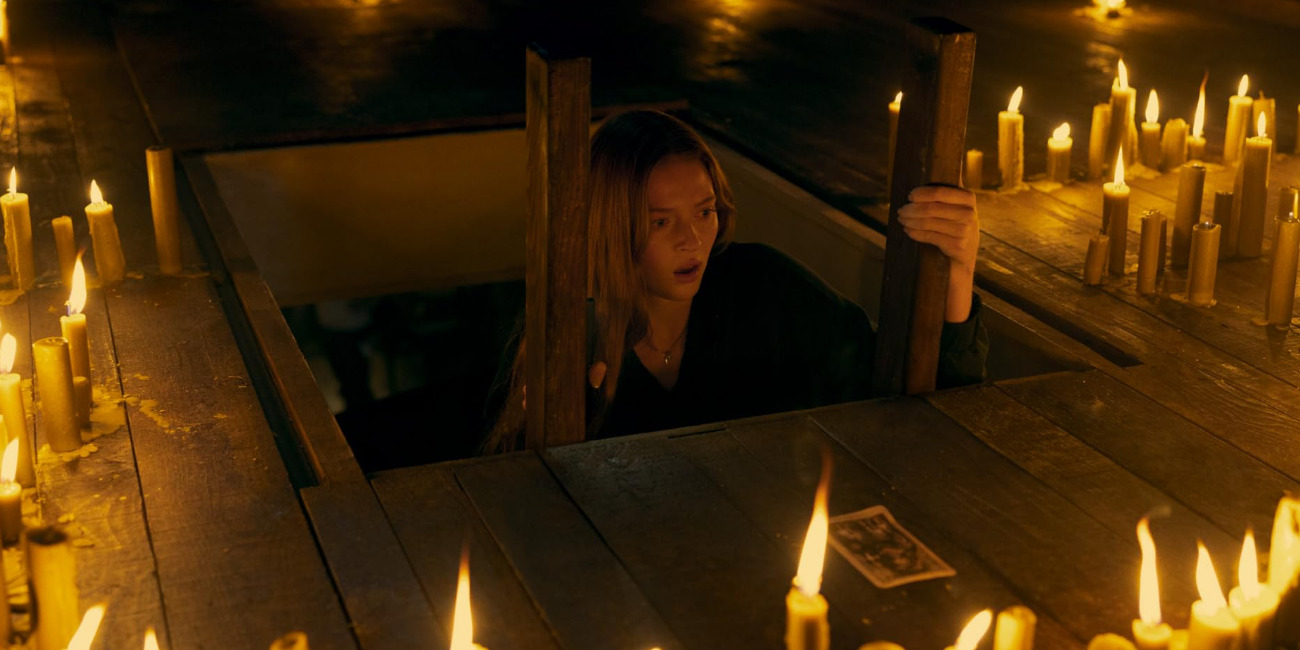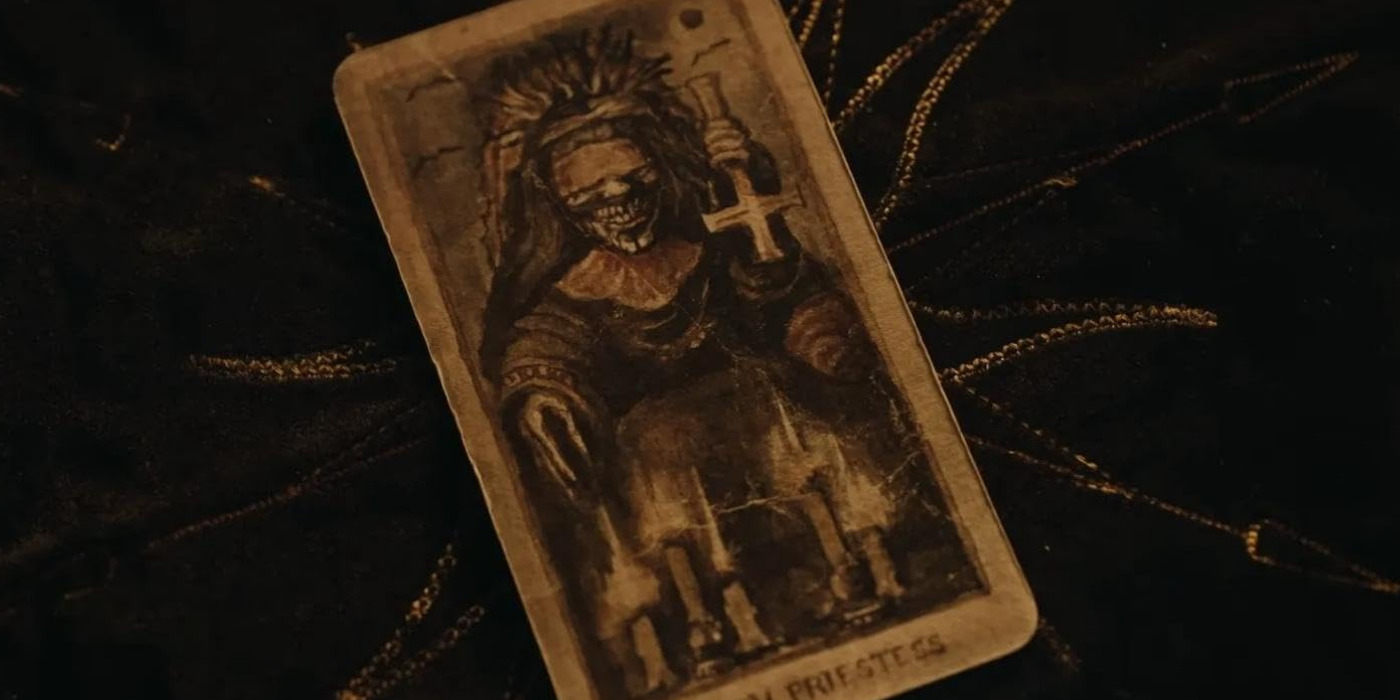Delving into a unique story within the horror genre, ‘Tarot,’ the astrology-centric film follows the fates of a group of college students whose impromptu tarot reading ends up defining their fates. After coming across a deck of uncanny old tarot cards, Haley’s friends convince the adept tarot card reader to hold a session and predict their future. However, as the young woman pulls out different cards for her friends— from The Fool and The High Priestess to the more sinister Death— the readings end up unexpectedly sealing her friends’ demises. As the cards’ prophecy comes to life in the worst way possible, Haley and her friends find themselves in a battle against an indomitable curse.
Even though the film’s supernatural elements remain prevalent throughout the narrative, the story builds a sturdy mythology around itself, involving the rich history behind divination and fortune-telling. As such, the premise invites viewers to wonder about the connection between the film’s depiction of tarot reading and reality.
Tarot Brings Divination to The Center of Horror
As ‘Tarot’ introduces different Major Arcana card characters to life to hunt down Haley and her friends, Paxton, Paige, Grant, and others, the film cements itself in fictionality through its supernatural elements. Even so, despite its departure from real-life inspirations, the story still retains curious origins. Although Spenser Cohen and Anna Halberg, the writers/directors behind the film, have confirmed that the story is their original idea, the film retains a technical basis in the 1992 novel ‘Horrorscope.’ Written by Nicholas Adams— a pen name equipped by a number of authors— ‘Horrorscope,’ as the name suggests, tells a slasher story about brutal killings revolving around the victim’s horoscopes.

Initially, Sony approached Cohen and Halberg with the idea of adapting Adams’ novel to the screen. While the filmmaking duo enjoys such stories in general, they decided against an authentic adaptation, instead opting to come up with an original idea. “When you look at the horror landscape, it’s like, there’s a vampire movie, and then there’s a slasher movie, and then there’s a zombie movie,” said Cohen in a conversation with A.frame. “Some of them are really well done, but they’re still playing with the same tropes and treading the same waters. This [‘Tarot’] was like, wait a second, Tarot cards coming to life — have we seen that? And the answer was no.”
Thus, with little established cinematic horror mythology behind the idea, Cohen and Halberg found themselves building the world of ‘Tarot’ from scratch, fictionalizing the ground rules for the universe on their own. The process took place during the COVID-19 pandemic when the filmmakers witnessed many of their friends turning to astrology in various forms to hold onto a sense of clarity in their lives. Consequently, they decided to include a fate vs. free will angle into the story to challenge the astrological norms while still playing into its themes.

Naturally, a foray into the world of tarot reading came with ample research time since both Cohen and Halbery wanted to ensure their project retained authentic ties to the divination practice. “We had a base knowledge of it [tarot reading], but we definitely learned a lot more about it in researching this movie,” said Halberg. “For us, I think there’s always been something that’s inherently scary about Tarot cards and Tarot readings, and this idea that somebody could possibly know the future or tell you something about what your future holds.”
As such, after Sony’s initial pitch for a ‘Horrorscope’ slasher film adaptation, Cohen and Halbery returned with an original idea centering around the horrors of tarot reading. Therefore, save for the book and the film’s shared utilization of astrology for horror, the two have little else in common. In fact, the film’s creators never even read the book, preferring to pave their own way with the project. Ultimately, the film remains defined by its Tarot-centric premise— which the filmmakers further authenticated by working with a Tarot expert, Angie Banicki, who remained a consultant on set.
Reportedly, Banicki taught the cast about astrology and tarot readings— and even did readings for a few of them. As such, while the film exaggerates and fictionalizes aspects of tarot reading to adapt it to the film’s horror genre, it still remains authentic to the craft within reason. As a result, ‘Tarot’ stands as an original idea, mining inspiration from divination for its fictitious storylines.
Read More: Mont-Rouge Renewed For Season 2 at ICI TOU.TV EXTRA


